Do Question Mark Butterflies Have Blue on the Ventral Wings
Butterflies are the most common insects to human beings because they have very bright colors and pay visits to the flowers now and then. The number of butterfly species is approximately 17,5000 across the world.
Butterflies fall into a group of insects that is called the Lepidoptera together with the moths. Like the moth, they have scales covering their wings, unlike all the other insects you will encounter. Butterflies are also unique from other insects in that they can coil up their proboscis.
The larvae of the butterfly species are known as the caterpillar. Butterflies are always associated with different plants, and they sometimes have a very complicated relationship with the plants.
The immature butterflies and some few butterflies eat plants, which makes them very dangerous to the plants. However, they are also essential to plants. When they visit them when flowering, they help the plants through the cross-pollination process, unlike the immature feed on the nectar from the flowering plants.
These adult butterflies are when they become beneficial to the plants.
Butterflies have also been rated as one of the most beautiful insects due to the bright colors. There are so many types of butterflies that you will come across every day, and it could take pages for you to list them.
Some of them have similar features, while others are quite different. Let's have a look of 22 types of butterflies that are listed in this article;
Quick Navigation
- Anthocharis sara thoosa Butterfly
- Brush-footed Butterfly
- Common Buckeye Butterfly
- Eastern Tiger Swallowtail Butterfly
- Gulf Fritillary Butterfly
- Hedylidae Butterfly
- Limenitis Arthemis Butterfly
- Long-tailed Skipper Butterfly
- Lycaenidae Butterfly
- Monarch Butterfly
- Morpho Butterfly
- Papilio Palamedes Butterfly
- Peacock Butterfly
- Peck's Skipper Butterfly
- Pieridae Butterfly
- Quino checkerspot Butterfly
- Riodinidae Butterfly
- Schaus Swallowtail Butterfly
- Skipper Butterfly
- Swallowtail Butterfly
- Viceroy Butterfly
- Zebra Longwing Butterfly
- FAQ Section
Anthocharis sara thoosa Butterfly
The Anthocharis sara thoosa butterfly has dark markings that look like those of the nominate species' first subspecies. The only difference is the marking on the ventral hind wings, which have a greenish green color that is darker.
The yellow coloration in the female Anthocharis sara thoosas is more about the butterflies found in the Cedar Fort, Utah Country, Utah region compared to the butterflies found in the Northern regions.
The males in the Northern Utah region patrol all over the riparian habitats looking for the females, which are located away from this region, but close to the host plants' Juniper trees larval.
The Anthocharis sara thoosa has been known to fly in the range, and Basin Proincs found in the Northern part of Utah in the Pine Valley Mountains and Beaver Dam Mountains in Washington County south.
Some butterflies appear in the EasternSouthen and Central part of Utah, approaching from the Colorado border. The Anthocharis sara thoosa butterflies host plants include the Arabis perennans, Descurainia pinnata, and Arabis holboelli.
These plants always seek refuge between the rocks and even under the juniper trees. The white ova of the butterflies turn orange after 24 hours and hatch in about 4-5 days.
The larvas are not of the same colors since the first one I light-colored and have a dark head, the second and third are greenish while the fifth is purplish.
Brush-footed Butterfly
The Brush-footed butterflies are scientifically known as the Nymphalidae and constitute the largest family of butterflies. In Northern America, approximately 30 percent of the butterflies that are found there are the Brush-footed butterflies.
The Brush-footed butterflies are divided into 11 small families: checkerspots, ladies, fritillaries, admirals, crescents, tortoiseshell rings, and commas.
There are so many types of butterflies in all the families of the Brush-footed butterflies. The Brush-footed butterflies have two pairs of legs. The first pair is smaller as compared to the second pair.
The tiny legs of the Brush-footed butterflies are mainly used for tasting food. The Brush-footed butterflies have exquisite designs and patterns of colors that are strapped on them.
The patterns also have dots and waves of patterns, which makes their colors very eye-catching. They are also notably small in size.
Common Buckeye Butterfly
The Common Buckeye is among the delightful species of butterflies that are found in North America. They are scientifically known as the junonia coenia.
They have brown wings and substantial markings that look like eyes on their wings. These large eye-like markings are similar to the eyes of the birds and lizards' eyes and help the Common buckeye butterflies ward off their predators.
They also have patches of blue and orange colors on their wings that you can use to identify them. However, it is tough for you to see the Common buckeye butterflies when they are flying since they fly at a very great speed.
Their wingspan is approximately 5 cm (2″). During the summer seasons or warm days, the Common buckeye butterflies are often seen in the plantations, bright-colored flowers, and snapdragons.
Unlike other butterflies, the Common buckeye butterflies mainly feed on the nectar from the yellow flowers. The larvae feed on nettles, and this is why you will see them on the plantain and snapdragons.
They also love staying on the dusty gravel roads, making the brown colors of the ground blend with their colors, surprisingly.
Eastern Tiger Swallowtail Butterfly
The Eastern tiger swallowtail is big beautiful butterflies that have very bold yellow wings that have black stripes. This is why they are known as the Eastern tiger swallowtail.
They are scientifically known as the Papilio glaucus. Their life history is very unusual as compared to the other types of butterflies. During the midsummer, the adult Eastern tiger swallowtail butterflies are always flying and wheeling high on the cherry branches and ash tree where the females lay their eggs.
The Eastern tiger swallowtail caterpillar is green in color and has some commonly said spots to be false eyes near the head. When the caterpillar feeds and becomes half-grown, they pull together some leaves' edges and form a little shelter for themselves.
They stay over in the shelters during the winter season, but they leave the shelter and continue feeding during the spring. In early summer, they pupate, and they hatch to become adults completing the process.
The females located in the southern parts of the range are smoky and dark green. This makes them very different from the other Eastern tiger swallowtail.
Gulf Fritillary Butterfly
The Gulf Fritillary butterflies or the Agraulis vanillae have elongated wings, which are bright orange with black markings and three black lines with white spots that run from the fore wing's edge.
The underside of the Gulf Fritillary has whitish and silver like spots which are outlined in black. The females and the males of the Gulf Fritillary butterfly are quite different because the females are slightly browner, darker, and have more massive marks than the larger males, but their colors are faded.
The Gulf Fritillary butterflies live for several weeks, depending on the climatic conditions. They live for about 4 to 6 weeks during the warm season while they live for 8 to 12 weeks when the weather is cold.
However, they cannot survive when the temperatures are below 21degrees Fahrenheit. The Gulf Fritillary butterfly adult is about 2.5 ft and 3.0 ft.
They are mostly found in an open and sunny location like the parks, roadsides, field, woodland edges, and urban gardens. They depend on the nectar of flowering plants like the butterfly bush, aster, zinnia, Lantana, verbena, and thistle.
The primary host plants of these butterflies are the passionflower and the passion vine.
Hedylidae Butterfly
The Hedylidae is also known as the American butterfly moths, which are known to have more than 40 species worldwide.
The Hedylidae butterflies fall under the family of butterflies that fall under the family of Geometroide. The adult Hedylidae butterfly has a wingspan of about 35 to 65 mm while their wings are triangular.
The fore wings are elongated and have an emarginate apex, while the hid wings are more rounded. The body of the Hedylidae is very narrow. The Hedylidae butterflies' wings are brown, gray with dark patched and some speckles and pale and hyaline patches.
The larvae of the Hedylidae feed on the leaves, and the Euphhorbiacaea, Tiliaceae, Malvaceae, Streculiaceaae are the host plants of the Hedylidae butterflies.
Limenitis Arthemis Butterfly
The Limenitis Arthemis is also known as the Red-spotted purple butterfly. It is also one of the most exciting butterflies since it has developed a way to mimic the other types of butterflies' appearance.
It falls under the same butterfly family as the white admiral, which is known as the Nymphalidae. Although the name of the Limenitis arthemis suggests that they are red, other Limenitis arthemis butterflies have wings with blue, black, and red colors.
The fact that the Limenitis arthemis butterflies mimic the other poisonous butterflies' appearance helps them be safe from their predators. They depend on the willows for food and are mainly found in the eastern US.
Long-tailed Skipper Butterfly
The Long-tailed Skipper is a butterfly from the Hesperridae or skipper's family. It has brown wings, dorsal fore wings with large spots that are glassy.
The hindwing of the Long-tailed skipper butterfly had a very long and prominent tail. The body and the wings have bases that have a blue, green color.
The ventral hindwing has a continuous dark brown outer band. Both the females and males of the Long-tailed skipper butterfly have no evident difference.
The wingspan of the Long-tailed skipper butterfly is approximately 48 to 58 mm. The Long-tailed skipper butterfly is a widespread type of butterfly that can be found anywhere around the world.
Mainly, the long-tailed skipper butterfly's habitats include the old fields, disturbed sites, woodland margins, roadsides, and gardens. Some larval host plants, including the pea family plants like the beaked butterfly pea, American wisteria, tick trefoils, and kudzu.
Lycaenidae Butterfly
This is the second-largest type of butterflies in the world. The Lycaenidae family consists of thousands of species. These butterflies are small and have a very rapid flight.
Most of the butterflies in this family have brilliant colors, resulting in interference effects resulting from the microstructure of their wings. Their eyes are either smooth or hairy but are surrounded by a dense border of white scales. They have protruding labial palps.
The Lycaenidae butterflies' antennae are usually half the length of their forewings or even shorter but have a very long club.
The legs of all the Lycaenidae sexes are functional, but the males' forelegs are less developed and smaller compared to those of the females. Their legs also have a pair of claws apart from the males' forelegs, which have only one claw.
The forewings of the Lycaenidae butterflies have 11 or 10 veins when veins 8 or 9 are absent. Their cells are also narrow compared to those of the other species. The upper sides of the wings have patterns of spots, unlike the undersides.
Monarch Butterfly
The Monarch butterfly is one of the magnificent and most common butterflies that most people know. It is also one of the best-loved insects among many people.
This is because of its unique size and the bright colors that make the butterfly look attractive. It is also known for its powerful and soaring flight. The name of this butterfly has been coined from its spotted margins that are located in its wings.
This is because they resembled the sable edged robes that were usually worn by the royalty when discovered.
The monarchs have a mind-boggling migration where millions of butterflies roost in the forests and mountains in places like Mexico. One of the fascinating things about the Monarch butterfly is that its only food is the sap of the poisonous milkweed.
This makes the Monarch butterfly very distasteful, and hence predators like birds do not love their taste. The fact that these butterflies are orange in color puts the other orange butterflies at peace and safety because the predators fear eating them.
Morpho Butterfly
The Morpho butterfly is one of the most dazzling butterflies that flutter around the rainforest. The Morpho butterflies are similar to the big and bright flashes when they are lazily flattering through the rain forests.
The beauty of these butterflies is also compared to a flying jewel's beauty against a green background. Therefore the Morpho butterfly will always capture your attention no matter how busy you are.
The butterfly looks plain and dull with patterned wings when it is still, but when it begins flying, it opens the wings, and that's only when you discover its real beauty.
Most adults love spending their time on the forest floors, trees, and on lower shrubs folding their wings, but when they are looking for mates, they will fly in any place of the forest.
These Morpho butterflies have a lifespan of about 115 days, which they spend while eating and reproducing. Humans encounter the Morpho butterflies along the streams and clear their land while pilots have experienced them now and then basking in the sun.
The Morpho butterflies change their diet throughout their cycle. In short, the caterpillar chews a variety of leaves, especially from the pea family, while the adult drinks sap instead of chewing.
Papilio Palamedes Butterfly
The Papilio Palamedes butterflies are also known as the Palamedes swallowtail. They are commonly found in the Southern United States and New York.
They have the same host plant as the Spicebush swallowtail butterflies, and hence you can find them on the same tree at the same time. Some of these host trees include the swamp bay, silk bay, and red bay.
The Papilio Palamedes also eat the sassafras and Spicebush, among other trees. They look like the black swallowtail butterflies, which have yellow scales on their hindwings.
They also have a yellow line that distinguishes them from the other swallowtail butterflies. During the winter seasons, they are usually chrysalises, but during the spring seasons, when the host plants have fresh leaves,
the adults come out, and they begin mating and laying eggs.
Peacock Butterfly
The Peacock Butterfly is one of the common butterflies found in Europe and Asia's temperate regions. When the Peacock Butterfly is alarmed or sees a bird or predators, it makes a hissing sound.
The hissing sound is produced when the Peacock Butterfly rubs its wings together. The wings of the Peacock Butterfly are brownish-purple in color and have bright spots on each wing.
These spots resemble a bird or lizard's eyes, which makes their wings have an owl's face look. The adult's underside is about 50 to 55 mm long. Peacock Butterfly's wings are mottled grayish brown.
The Peacock Butterfly's caterpillar is black and has spines and depends on stinging nettle for food.
Peck's Skipper Butterfly
The Peck's skipper is a type of butterfly mainly found across the southern part of Canada from British Columbia east to Nova Scotia. It is also located in the United States, especially on the eastern side of Oregon, Washington, to Mane and south to Mexico, Missouri, and northern Georgia.
It is also present throughout New Hampshire. The Peck's skipper butterfly has a wingspan of 1to 1.25″ and has a dark brown upperside, forewings with small orange dots, and hindwings with an orange patch.
The underwing's underside has pale yellow spots that are surrounded by a brown color.
The males have curved stigma or patch on the forewing, which is not there for the females. The Peck's skipper is found in places with open grass like the marshes, roadsides, meadows, and lawns.
The Peck's skipper caterpillar feeds on grass, mostly the rice grass and bluegrass, while the adults feed on the nectar from plants like the purple vetch, New York ironweed, milkweed, thistles, and dogbane.
The Peck's skipper males always perch in the sunny areas waiting for the females, which then lay eggs in the host plants after mating. They have a very long lifespan compared to the other types of butterflies and can produce about one to three broods in a year.
The caterpillars are always maroon in color but have brown markings and a black head with white spots and streaks.
Pieridae Butterfly
The Pieridae butterflies are butterflies that fall into the superfamily Papilionoideae, commonly known as the real butterflies.
Most of the Pieridae butterflies are evenly distributed in all the tropical parts of the world. The adult Pieridae butterflies have medium or small wings, either white, orange, or yellow, with some black or red patterns.
Most of the Pieridae butterflies have hidden ultraviolet patterns that they use during the courtship period. Adults are commonly found in flowers because they depend on the nectar for food.
All the female and male adults have three pairs of legs, which they use for walking. Males usually patrol looking for female mates, and after mating, the females lay eggs generally in columns on leaves, stems, and buds of their host plants.
Most of the caterpillars feed ion legumes or plants of the mustard family like the crucifers.
Quino checkerspot Butterfly
They are usually small and are members of the brush-footed butterfly family known as Nymphalidae. Their wingspan is about 2.5cm and has dark brown, yellowish, and reddish spots.
The Quino Checkerspot butterfly is also one of the most recognized subspecies of the Editha Checkerspot. However, it can be distinguished from the other subspecies since it is more extensive, and its wings are redder and have fewer and discrete light spots than the other butterflies in this family.
The adults have a lifespan of 4 up to 8 weeks. The habitat of the Quino Checkerspot butterfly is on the open grasslands and sunny openings that are within the chaparral and on the coastal sage shrubs.
They are mainly found in the foothills of the Southwest part of California and the Borth west part of Baja, California. The larva's host plants are the plants that grow near or in the vernal pool, coastal areas, meadows, and lake margins.
The larva depends on you, the dwarf plantain, for food.
Riodinidae Butterfly
The Riodinidae butterfly consists of butterflies that are located in the Southern American region. The number of species of butterflies in this group is vast.
However, some of these butterflies are found in the tropical areas of Africa, Asia, and Europe. The Riodinidae butterfly is closely related to the butterfly, so it is in the Lycaenidae subfamily but is quite different.
For instance, the males have shorter forelegs and are very useless in walking while the females have three pairs of legs and claws.
They also have the precostal vein in the hindwing. They are diverse when it comes to their shapes, patterns, and colors.
Most of them, however, have metallic green. Silver or blue markings are the main reason they are referred to as the metalmarks butterflies.
Unlike most butterflies, the males locate their mates by perching and not patrolling.
Schaus Swallowtail Butterfly
The Schaus' swallowtail butterflies are scientifically known as the Heraclides aristidemus ponceanus. They are large brown and yellow butterflies commonly found in Florida, Cuba, Bahamas, and Hispaniola.
They are restricted to intact tropical hardwood hammocks and margins associated with them. The Schaus' swallowtail adults have a wingspan of approximately 86 to 130mm.
The females are larger as compared to the male Schaus' swallowtail butterflies. Both the males and females are similar, but the tips on the male antennae are yellow.
The Schaus' swallowtail butterflies have an upper surface that is brown in color and has yellow spots on the submargin and broadband, which is yellowish.
The underside of the wings, on the other hand, are awhile and have brown markings and a median band that is broad and has a rust color. The hindwing, tail of the Schaus' swallowtail, has a yellow spot at the center while its forewing is yellow and has spot bands.
The adults slowly fly as they maneuver the hardwood hammock vegetation.
Skipper Butterfly
The Skipper butterfly of the Hesperridae family is one of the fastest types of butterflies. They occur in almost all parts of the world.
They are considered as an intermediate form between the butterflies and the moths. The head of the Skipper butterfly resembles the moth's head while they have small bodies that resemble those of moths.
When the Skipper butterflies are at rest, they hold their first pairs of wings just like other butterflies do. Like the moths, the Skipper butterflies do not have the wing coupling structures.
They have clubbed antennae like the butterflies, but the club ends in slender hooked tips. Although they are small, they have powerful wings that enable them to fly faster.
The larva feeds on plant leaves and grasses, and this is why they live inside the folded and rolled leaves.
Swallowtail Butterfly
The Swallowtail butterfly or the Papilio demodocus is commonly known as the orange dog. The Swallowtail butterfly is black and has yellow markings on its wings.
The wingspan of the Swallowtail butterfly is about 10 cm. These types of butterflies are mainly common during the rainy seasons. The females lay whitish or gray eggs on the tender leaves and twigs. The caterpillars are green or white brown.
The young caterpillars are brownish and have white patches with spines resembling fresh bird droppings. As the caterpillar grows, the spines usually disappear.
The older ones are green but have light markings and two eye-like spots on the front part of the body. When the caterpillars are disturbed, they usually shoot out a retractable organ that is flesh and forked behind the head.
The organ produces a repulsive smell making it their defense mechanism. The mature caterpillars are about 5 cm, and they feed on young citrus trees, and they damage these trees when they are in their nurseries.
Viceroy Butterfly
The Limenitis archippus or the Viceroy butterfly is a butterfly similar to the monarch butterfly, but the two have their differences.
The name of this butterfly, Viceroy butterfly, is coined from the monarch's resemblance, and both of them are butterflies related to royalty. The only difference between the monarch and the viceroy is that the viceroy is the black pattern on the hindwings, crossing the other lines on the wings.
Besides, the viceroys are also smaller than the monarch. Both of them have an orange color, and hence you may confuse between the viceroy and the monarch butterfly.
The viceroy is known among most of the butterflies in North America for its mimicry.
Zebra Longwing Butterfly
The Zebra longwing butterfly is also called the zebra Heliconian, which is a common butterfly species in Mexico, Florida, parts of Texas, Northern South America, and Central America.
The Zebra longwing butterfly has very long and narrow wings that are black and have light yellow stripes that resemble those of the zebra only that the zebra has white stripes. The antennae of the Zebra longwing butterflies are also very long.
They mainly live in damp, warm, and tropical areas. They are also often found in the hammock and the thickets.
The Zebra longwing butterfly drinks the nectar of different flowers. They also love the nectar of the passionflower, which is toxic and gives them a very unpleasant taste that most predators dislike.
The females lay a maximum of 15 and a minimum of 5 eggs on the passionflower vines, which hatch to caterpillars. If there is a conducive environment, they become butterflies within three weeks.
The caterpillars have yellow heads and white bodies with black spines, which are very long. They eat the leaves of the passion flowers. When the Zebra longwing butterfly is disturbed, it wiggles its body producing a creaking sound.
They roost in the same tree during the night, where they rest.
FAQ Section
What do butterflies eat?
The most popular question about butterflies is their diet. To understand what the butterflies eat, you have to begin by understanding that they have a unique life cycle. Therefore, they have a different diet when they are in their caterpillar and adult stages.
When they are in the caterpillar stage, butterflies are herbivores. They eat different parts of plants like leaves and stems for them to grow and become adults. The caterpillars have powerful mouths and jaws that help them chew down leaves and stems of these plants.
The type of plants that they feed on depends on their habitat. However, most of them will depend on the plants that have broad leaves.
When they are in their adult stages, they completely change their diet, and at this stage, butterflies do not depend on concrete food, but the liquid they get from different flowers of a variety of plants.
Therefore, all the nutrients that the butterflies require are absorbed in the form of liquids. They have a long tubular mouth that they use to suck fluids from flowers and plants.
The primary source of these liquids is the nectar that is found in flowers. They also get nutrients from the sap on trees, sweat, pollen, fruits, and feces. The fact that the butterflies require enough supply of sodium in their bodies makes the land on people absorb the sodium that is contained in the excretions of human bodies.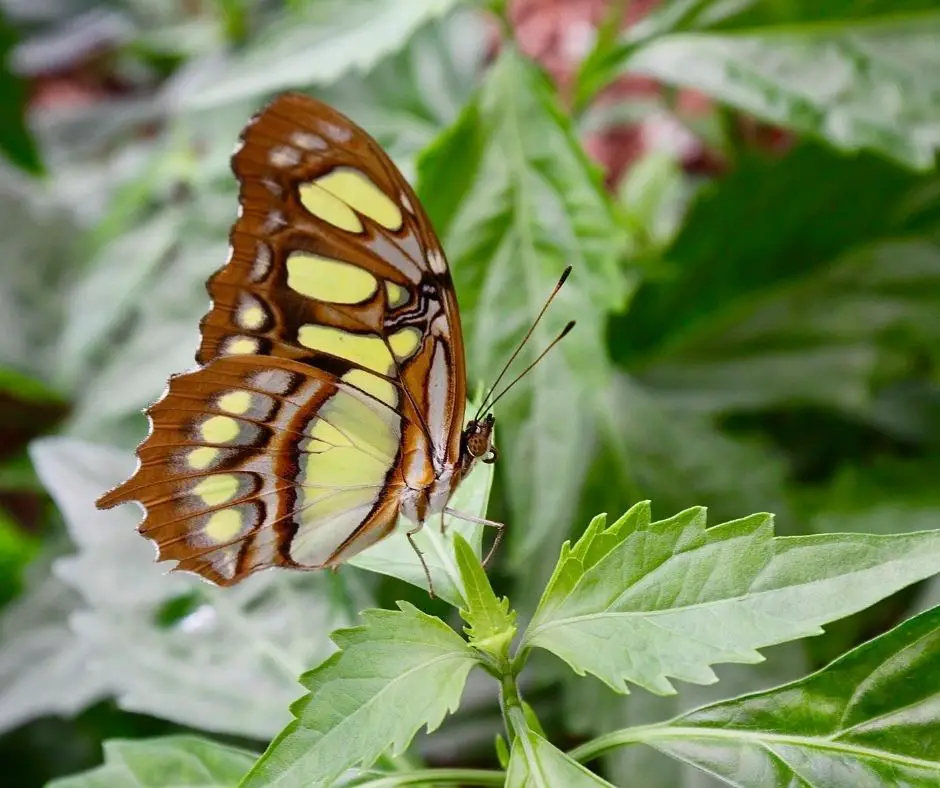
Do butterflies eat bananas?
It is clear that butterflies love flowers, but they also love fruits. This is because fruits, like most flowers, are sweet and juicy.
Most people do not think that bananas are juicy enough for the butterflies, but they become softer as they become ripe.
When they are softer, it is easier for the butterflies to ingest bananas. When you peel these ripe and mushy bananas and then place them near your flower beds, butterflies will find them and enjoy eating them.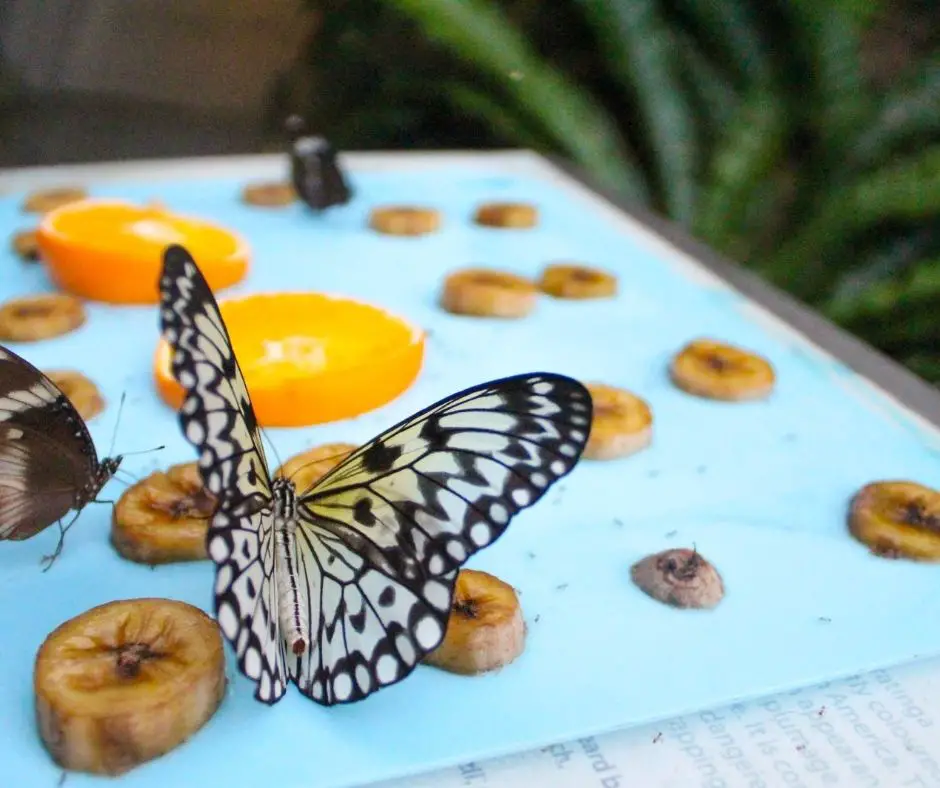
How long do butterflies live?
The length of time that the butterflies live varies and is determined by several factors.
Some of the factors that determine the length of time that butterflies live include;
• The size of the butterflies
• The species of the butterflies
• The habitats of the butterflies
• When the adult became an adult
Therefore, large butterflies always live longer as compared to small ones. There are usually butterfly species that last for one week, while others will last even nine months, depending on the species.
The time when the butterfly became an adult on the other side is critical. If the eggs are laid before the onset of the cold season, they have to stay in that form until it becomes warm.
When the caterpillar hatches during the warm period and matures to adulthood, but does not have enough time to migrate to the south, the butterflies will have to spend their time in the cold.
Since it will be harsh for them, they have to hibernate anywhere until the cold season is over, which means that they will live longer than their lifespan.
Consequently, the fact that birds that live in the wild are exposed to more predators makes them endangered, which automatically reduces their lifespan if anything happens to them
How do butterflies sleep?
Butterflies do not sleep, but they become quiescent or rest during the day if it is very cloudy or cannot maintain the activity levels of temperature and even at night.
Since butterflies do not have eyelids, their eyes are always open when they are in the quiescent state or are resting.
They also hide amid foliage or hang upside down from twigs and leaves of shrubs and trees. At night butterflies are always drowsing in evergreen trees and shrubs with broad leaves, tree barks, fallen leaves, rock crevices, and brush piles.
When it is dark, butterflies will require some warmth since they are cold-blooded, and they have to ensure that their activity levels are up. Therefore, they become inactive during the night, and at this time, they close their wings and the rest.
Most of the butterflies will look for safer places like under leaves or rock crevices. Most of the butterflies sleep alone, but several species sleep in groups in the same tree.
The butterflies to sleep together do so for security purposes. When any butterfly is disturbed, it opens its wings, touching the other butterflies that get alarmed and escape together.
Some poisonous butterflies sleep together since they produce a more potent smell that keeps them safe as they sleep when they are many.
When it becomes hot, and they are sleeping, butterflies reposition their wings, minimizing their sun exposure.
How do butterflies drink water?
Unlike some insects, butterflies do not have a mouth. Instead, they have a proboscis that extends from the front of the head.
The proboscis is a long tube that looks like a straw when it is being used, but it coils it up when they are not using it.
Butterflies drink water by extending the proboscis deep into the water source, and they sip water. 
Why do butterflies like flowers?
Everything that is beautiful is always very attractive. To the butterflies, they like flowers and most flowers alone but lovely flowers.
Butterflies get attracted to the bright colors of the flowers, which is one reason they like them.
Secondly, they require nectar for them to survive. Since flowers have the nectar that they need, they must like them.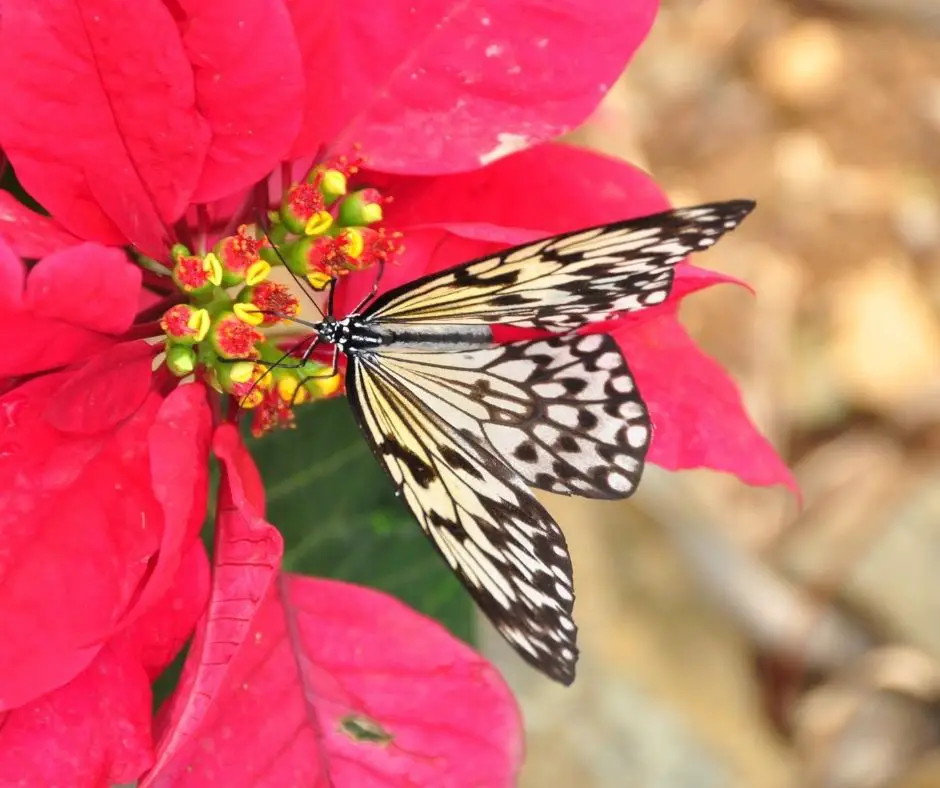
How do butterflies get their colors?
Butterflies are among the few insects that possess very striking color displays.
When the butterflies fly from one flower to another, you may think that their colors are changing, but it's the effect these colors have.
The striking colors help the butterflies get mates, camouflage, and warning to the other butterflies. The great question is where these butterflies get these beautiful colors.
The two sources of the butterflies' striking and attractive colors include pigmented or ordinary colors and structural colors.
Pigmented colors
The ordinary or the pigmented colors come from normal chemical pigments that are known as absorbing wavelengths of light and reflecting other wavelengths while producing different colors.
Structural color
The structural color stems from a specific structure of butterflies' wings. It makes some butterflies look as if their colors are sifting and becoming more intense. The observer sees the quality of the colors changing, and this process is called iridescence.
This quality is also observed in several animals, including the peacocks and fishes, but is common among the butterfly family.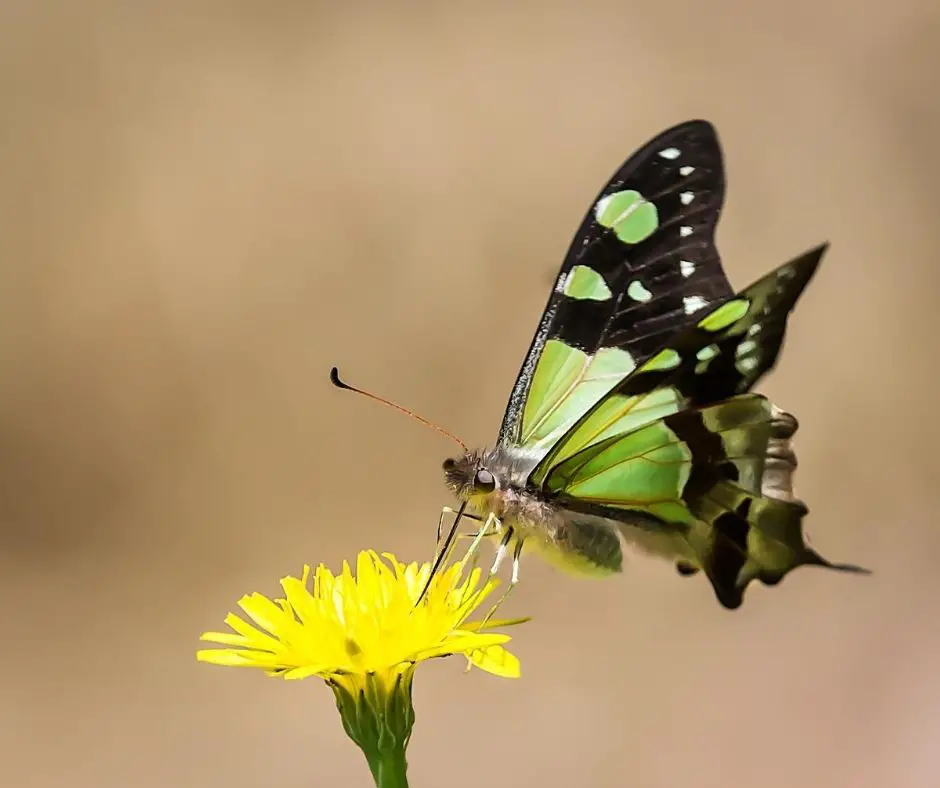
Why do butterflies migrate?
Everyone is aware of the monarch butterfly migration among the monarch butterflies.
However, other types of butterflies also migrate due to several reasons and different times of the year from one place to another. Some of the reasons why butterflies migrate include:
Climatic change
Butterflies are cold-blooded animals, and hence they do not do well in places where the weather is very cold. Therefore, when butterflies realize that a warmer season is coming to an end, they get prepared to migrate so that they can go to a more hospitable place.
To look for food
In some seasons, trees and shrubs do not have green leaves, and hence they are not expected to produce any flowers at any time sooner, yet the butterflies require to feed.
Therefore, they have to migrate to greener pastures, where they will get enough sources of food. This mainly happens during the winter seasons. They usually come back in spring when the plants are green, and they have begun producing flowers.
Establish new colonies
Some butterflies live in tropical areas, and food and water is not an issue to them. However, these butterflies migrate, but in this case, to establish new colonies.
The main reason for this migration is that the caterpillars, which depend on leaves and stems of plants, will end up consuming all the plants, and the butterflies will have to starve to death.
Instead of starvation, they look for places where they will survive, and they will have an assurance of their food source.
How do butterflies get their food?
Although butterflies do not have mouths, they can tell what is edible and what is not.
The butterflies' feet are equipped with taste sensors that help them know the taste of every plant or flower immediately they land on them.
The sensors also help them learn about edible food sources for their young ones, which allows them to determine the best places for them to lay eggs. 
How do butterflies defend themselves?
Every living thing gets attracted to butterflies for different reasons.
To the people they get attracted to them because they are beautiful and attractive, but they are prey to so many animals.
Therefore, they have to defend themselves against their predators. Some of the defense mechanisms of butterflies include:
Camouflage
Butterflies can blend with the environment where they are living. Some of the butterfly species look like flowers such that a predator cannot tell the difference.
Warning coloration
When predators see brightly colored butterflies, they think that these butterflies have a foul taste or are poisonous, which is very true among most bright colored butterflies that feed on the toxic sap of trees.
Mimicry
Some butterflies can mimic the other poisonous butterflies, yet they are not poisonous and do not have a foul taste.
Most of these butterflies have similar or almost similar color patterns of the poisonous ones, making them ward off their predators.
Producing a foul smell
Other butterflies tend to produce a horrible smell when they are in danger. Some of them also produce a hissing sound.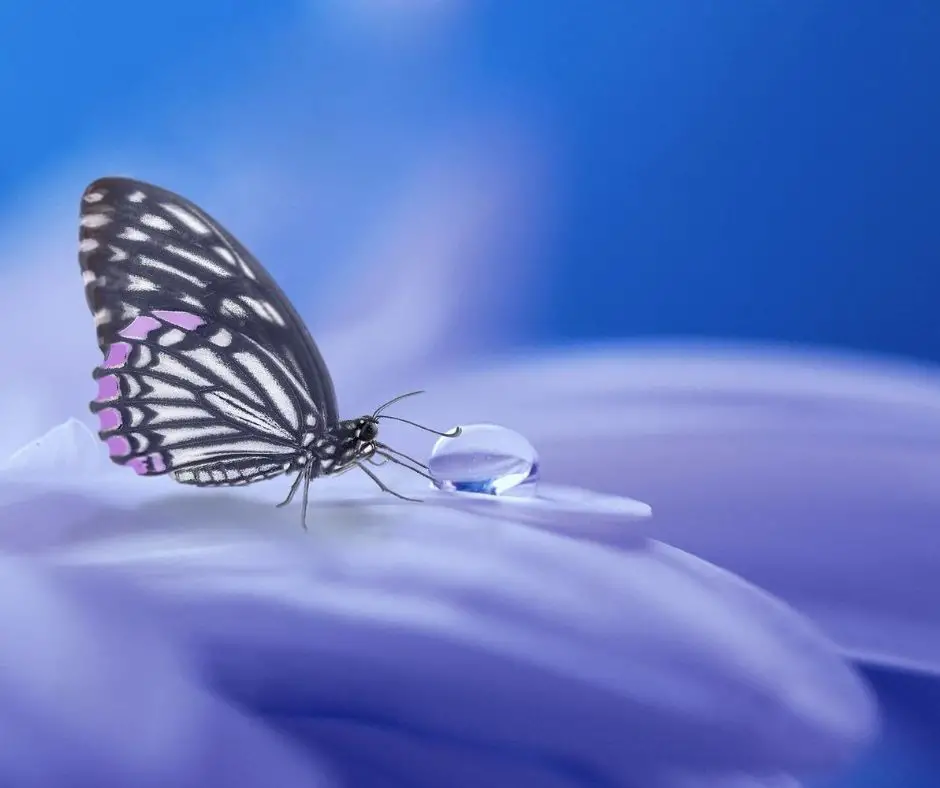
What is special about butterflies?
There are so many special things about butterflies that are not there in many insects. Some of them include;
• Although they are nearsighted, they see colors for any distance.
• They use tricks to avoid being eaten by predators.
• They can quickly assemble their proboscis.
• They use their feet for tasting.
• They live on all liquid diets.
• They have transparent wings, but they are very colorful as they fly.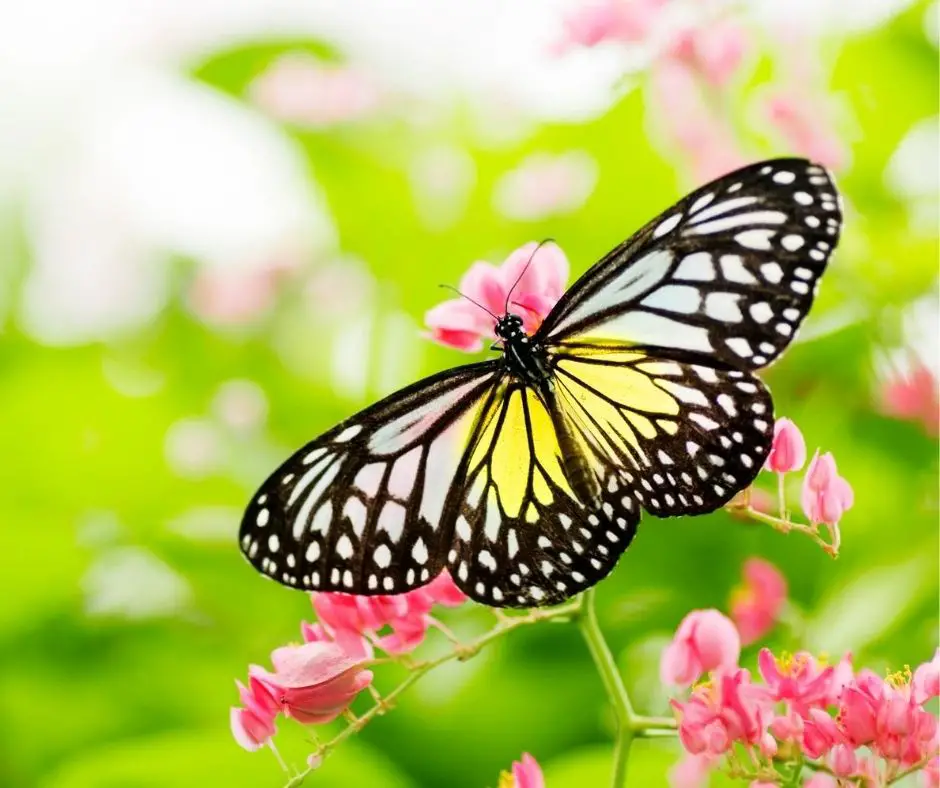
Do butterflies bite you?
The answer is no. Butterflies do not bite because they do not have biting mouthparts.
They have a proboscis that they use to suck nectar and water and not bite.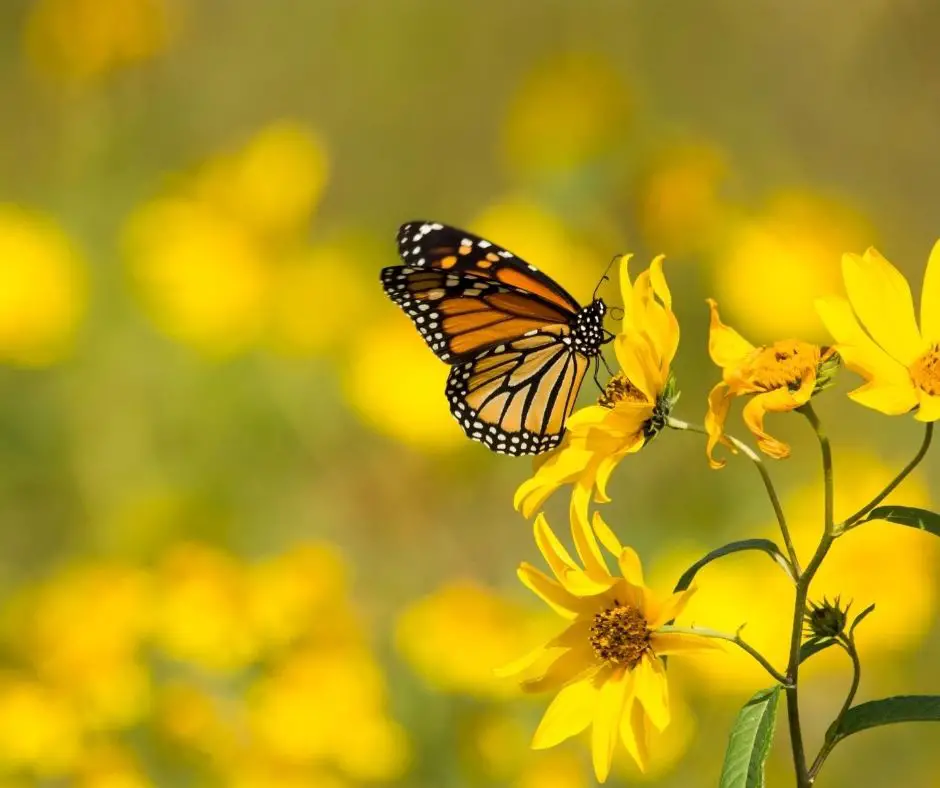
Source: https://www.animalshq.com/22-different-types-of-butterflies-plus-faq/






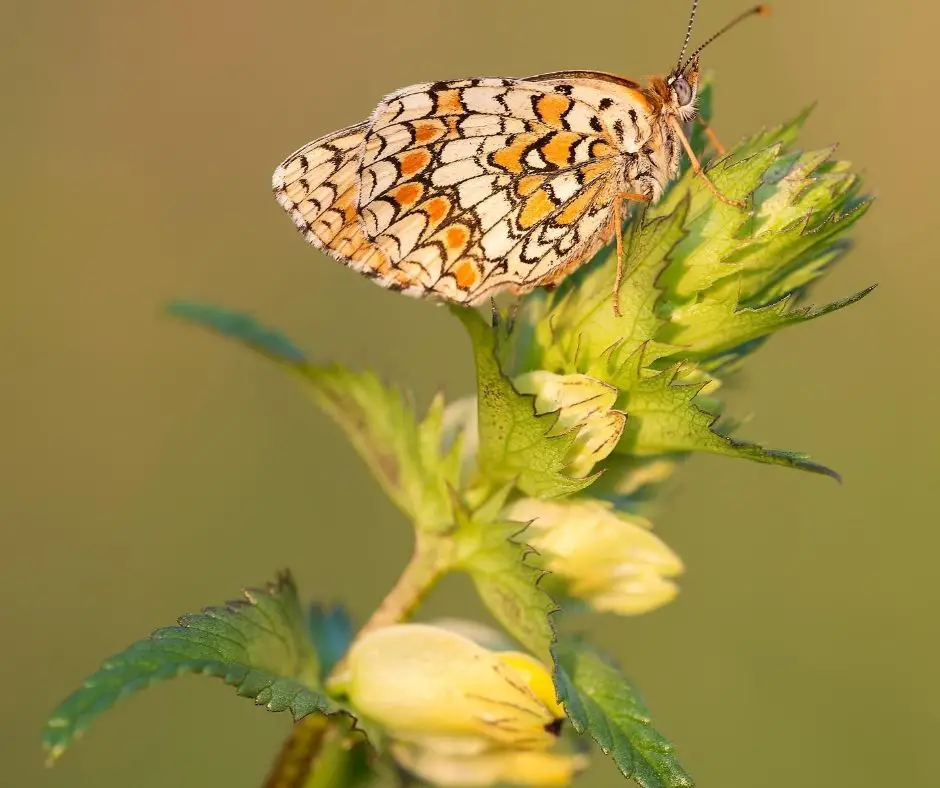
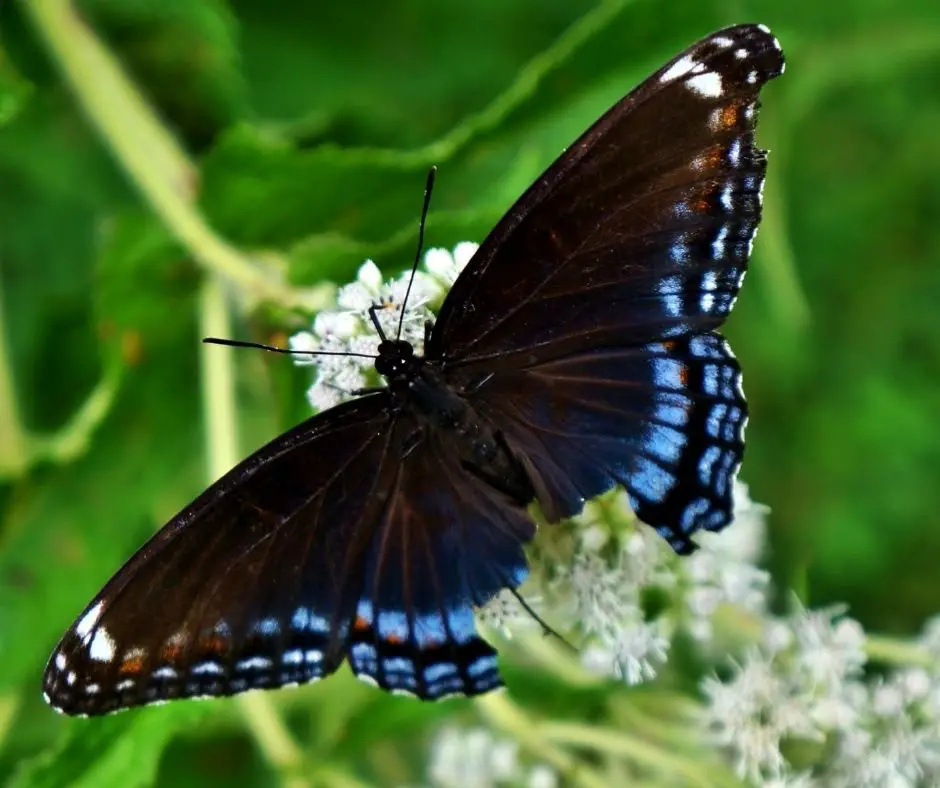

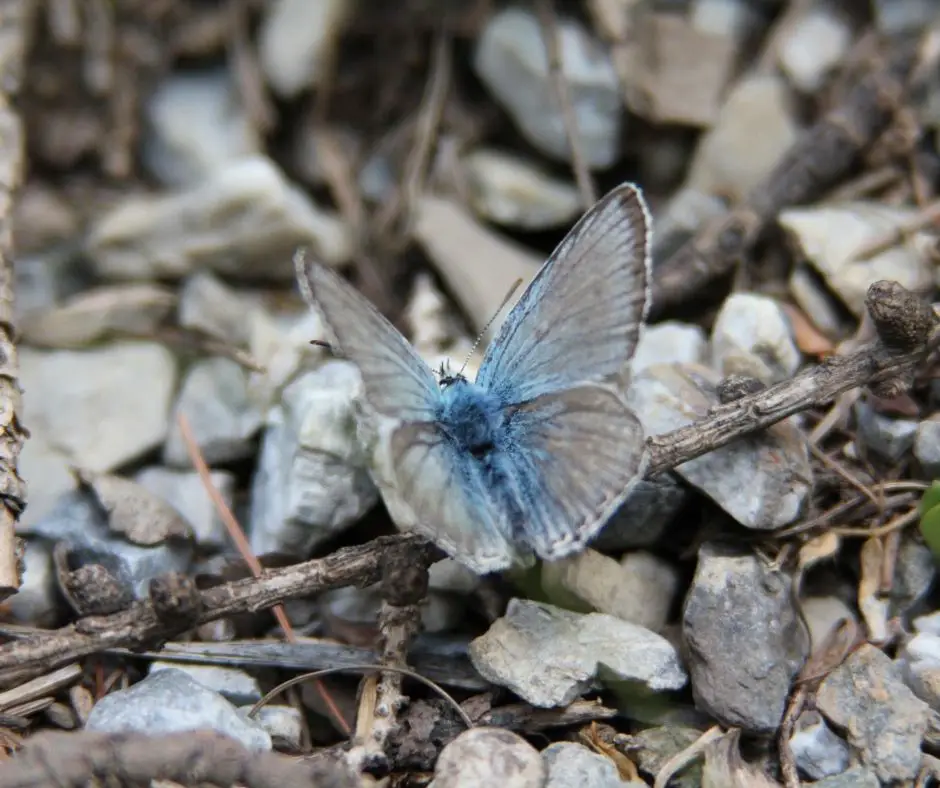
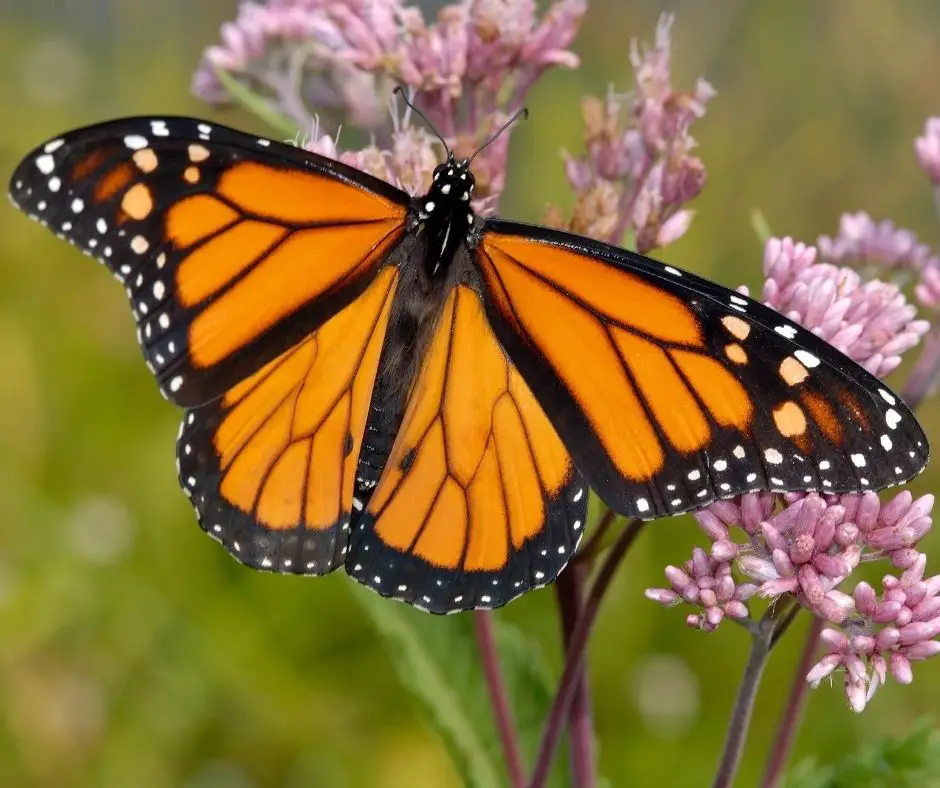
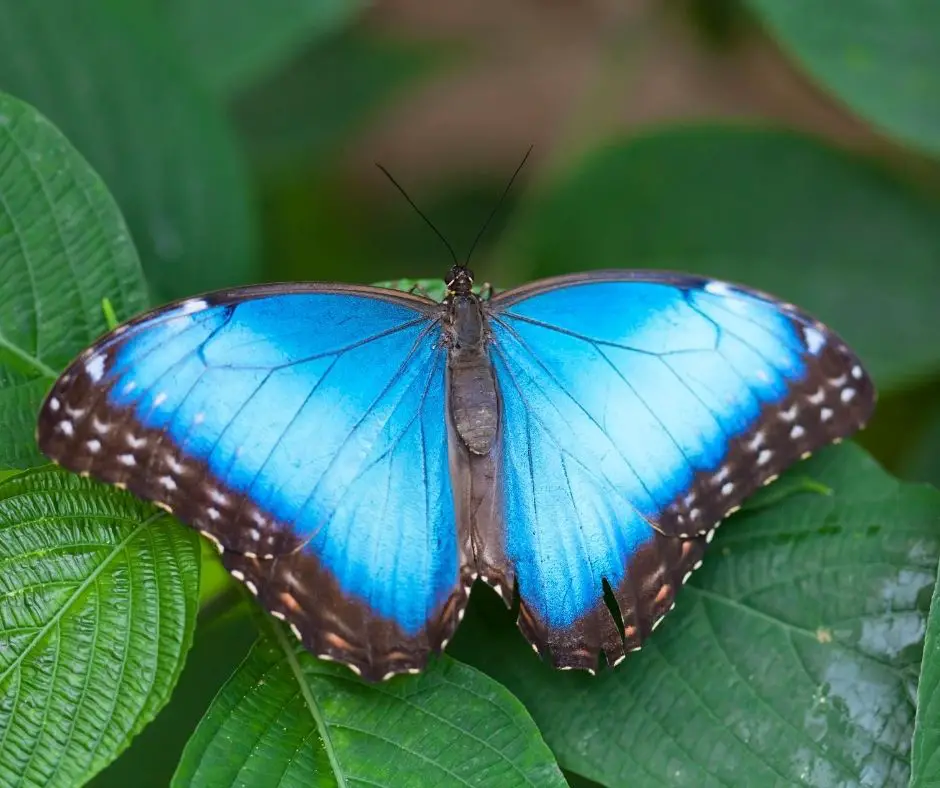

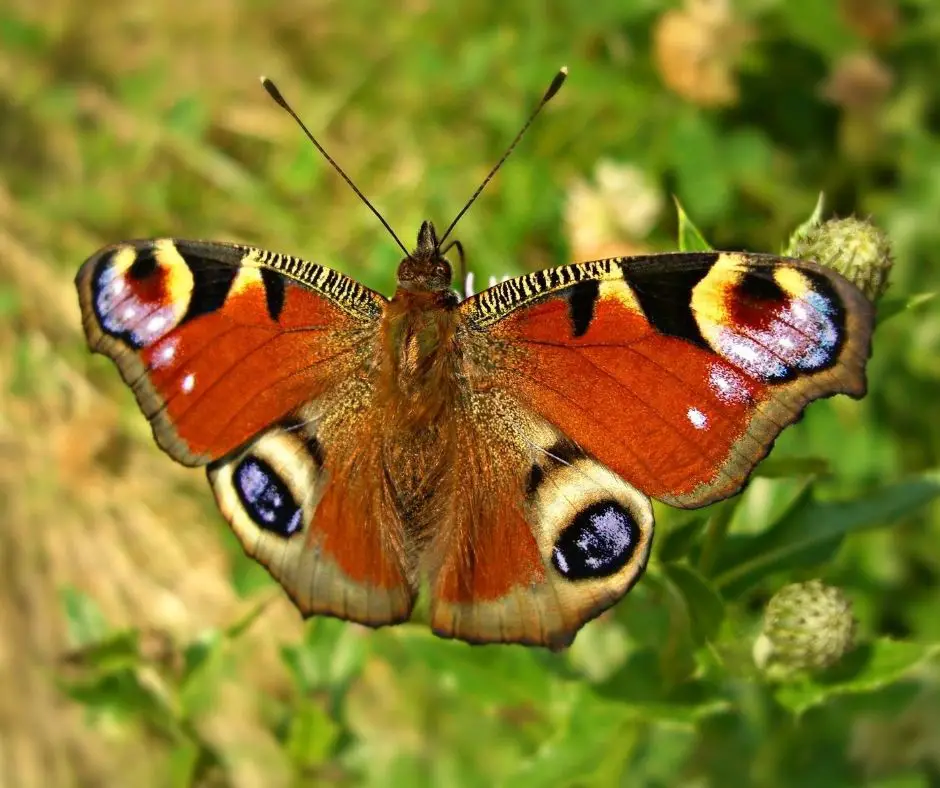
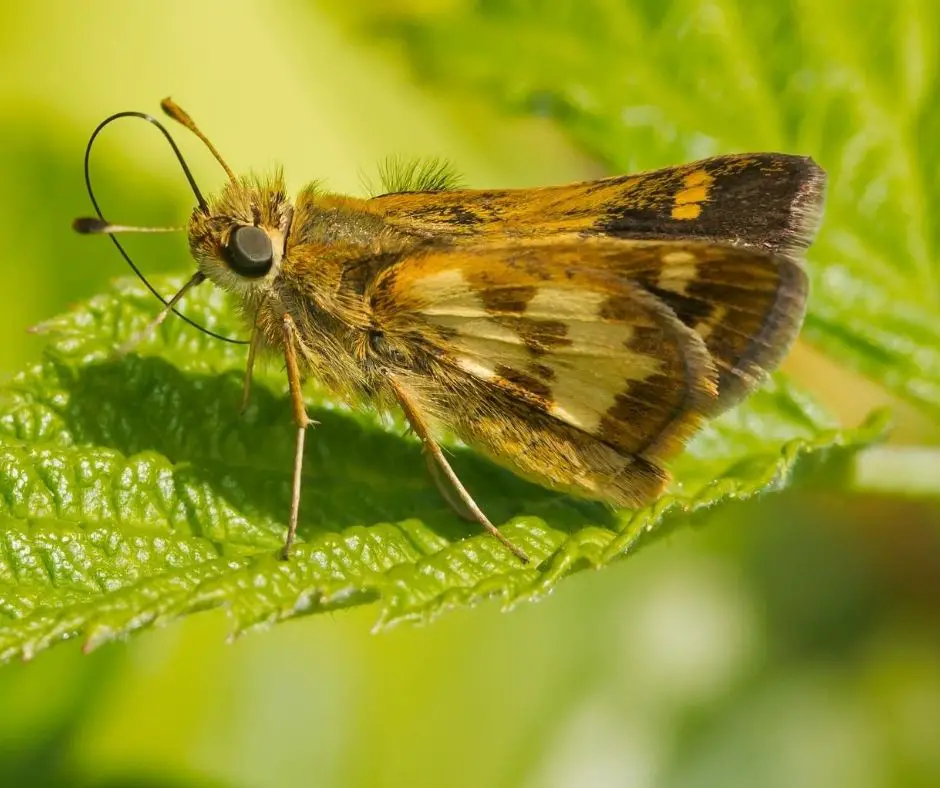



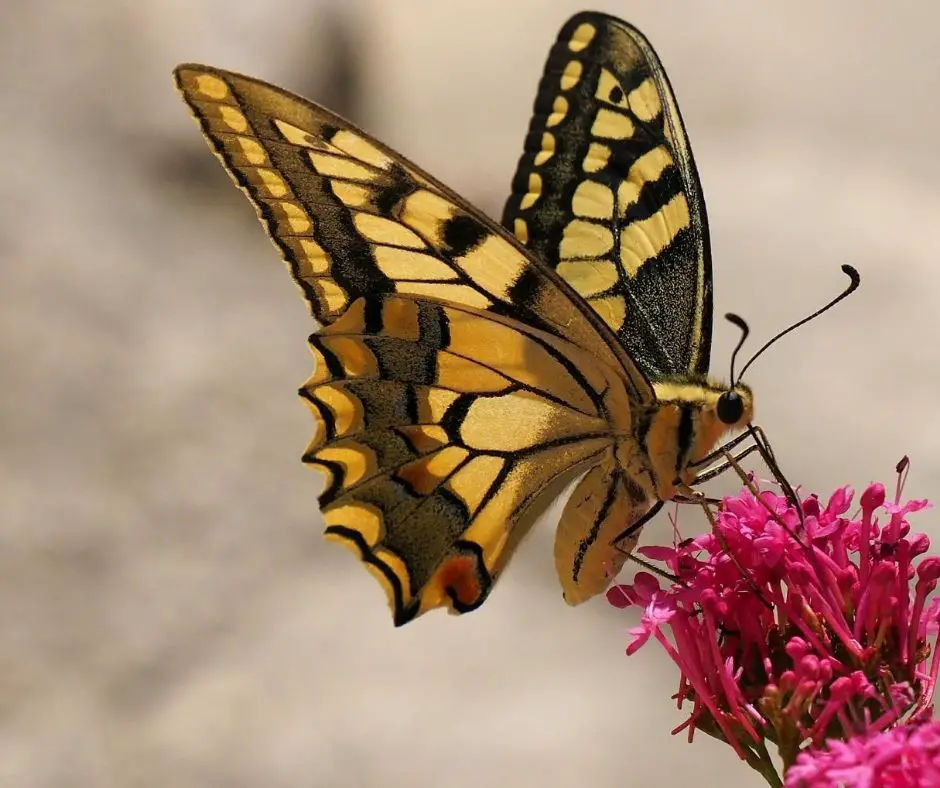

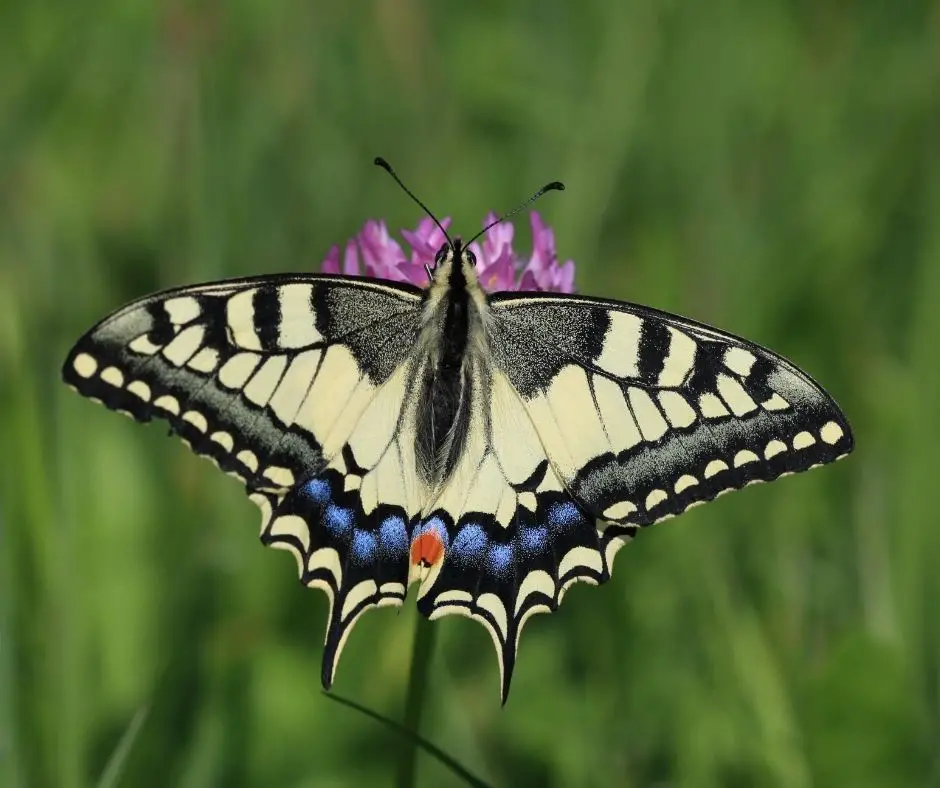


0 Response to "Do Question Mark Butterflies Have Blue on the Ventral Wings"
Post a Comment